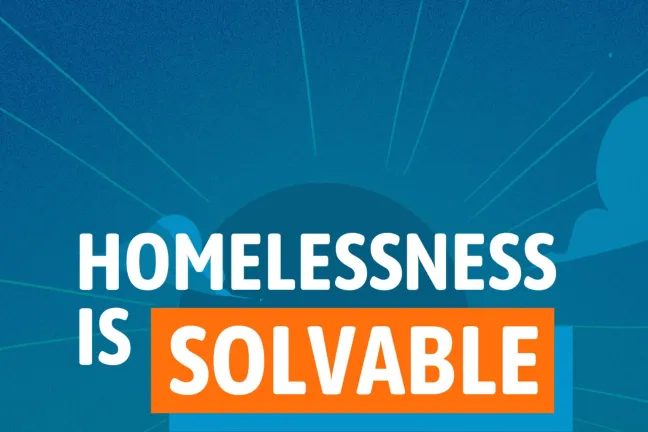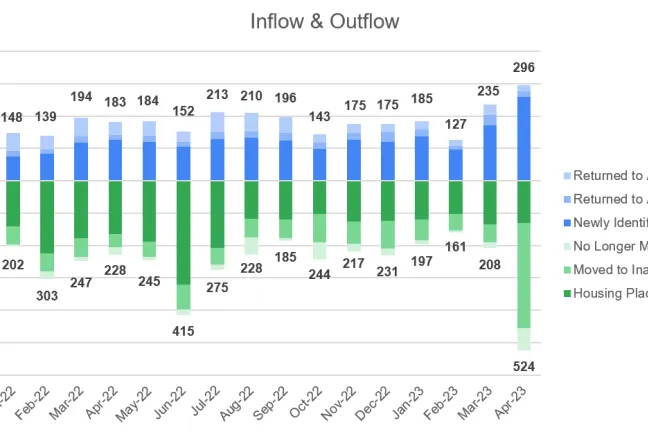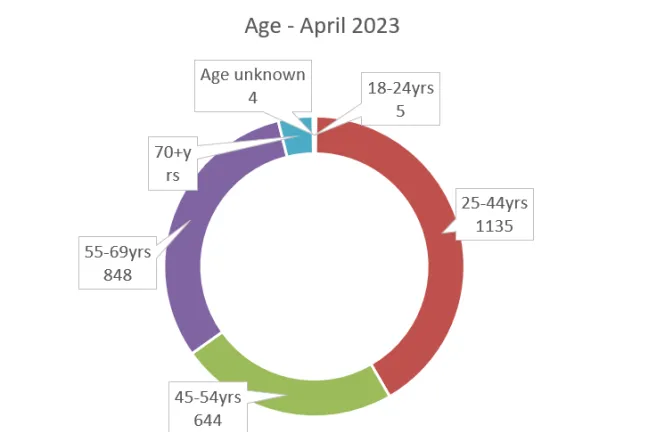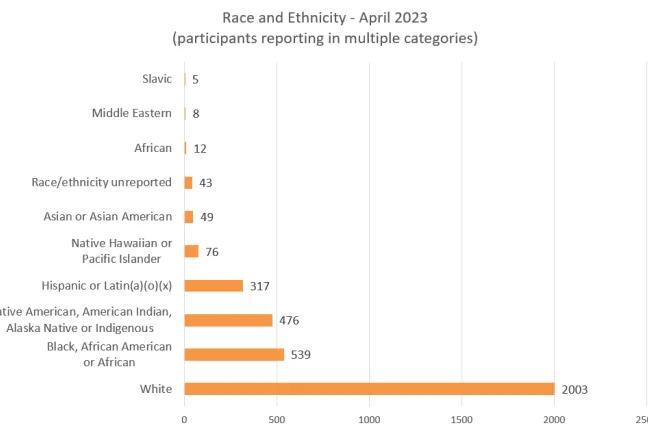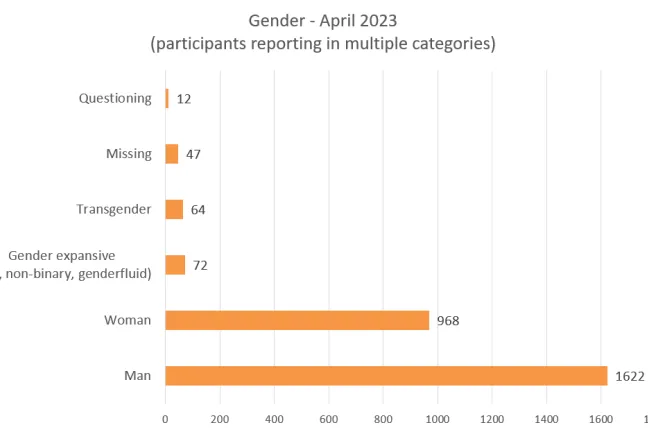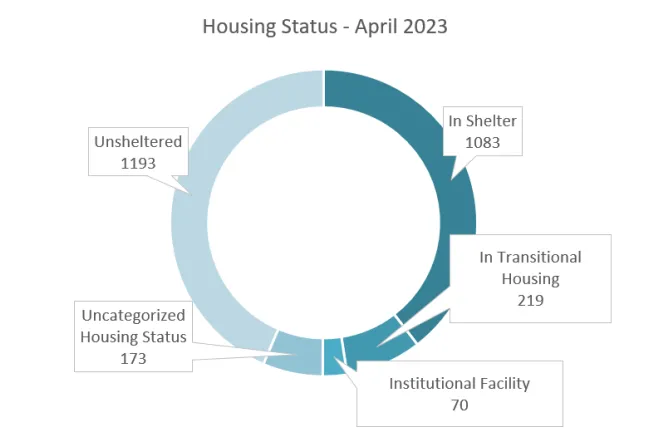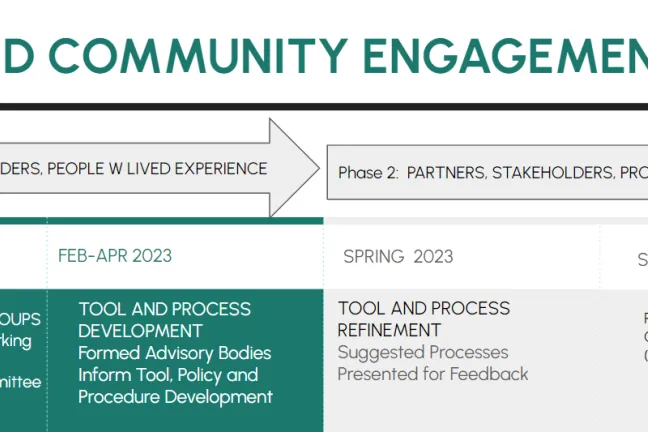In late 2021, Portland, Gresham and Multnomah County joined Built for Zero, a national movement of more than 90 cities and counties in the United States working to measurably and equitably end homelessness.
What is Built for Zero?
Communities in Built for Zero work toward measurably ending homelessness for all by strengthening data-driven systems that can continuously reduce homelessness in communities. Community Solutions, the organization behind Built for Zero, was awarded the MacArthur Foundation’s $100 million 100&Change grant to help communities accelerate an end to homelessness through its Built for Zero initiative.
Portland, Gresham and Multnomah County are leveraging this partnership to accelerate our efforts to reduce and end chronic homelessness.
Our Progress on Built for Zero
Starting in April 2023, the Joint Office will be releasing monthly data from a by-name list of people experiencing chronic homelessness in Multnomah County.
For more information and data, view this presentation about this first data release:
Presentations
April 2022 Presentation on Built for Zero Progress
Progress reports
Archive of past progress reports
Monthly Snap Shots
Current timeline for community engagement
Frequently asked questions
Which group of people experiencing homelessness are the focus of this effort?
The current focus is on single adults experiencing chronic homelessness. The Joint Office is using a more expansive definition of “chronic homelessness” than the definition used by the U.S. Department of Housing and Urban Development. The definition we’re using, also called “Population A,” was created by the Metro Supportive Housing Services Program.
The Population A definition of chronic homelessness is: “Extremely low-income households with one or more disabling conditions experiencing/at imminent risk of experiencing long-term literal homelessness.” (Disabling conditions can include a physical, psychological or cognitive disability, a chronic illness or an addiction.)
Unlike the HUD definition, Population A does not require a person to get a third-party diagnosis of their disabling condition to be considered chronically homeless. Additionally, the Population A definition has fewer parameters about length of homelessness and types of living situations than the HUD definition.
Using a more expansive definition of chronic homelessness supports the work outlined in the Metro Supportive Housing Services Program Local Implementation Plan (LIP) and represents the intentional inclusion of all adult households experiencing or at imminent risk of long-term homelessness, not just those identified under HUD’s definition of Chronic Homelessness.
Using this different definition does mean the Joint Office’s data won’t be directly comparable to data on chronic homelessness that uses the HUD definition.
Why only 'chronically homeless individuals' and not others?
As part of the Built for Zero initiative, we will focus our initial system improvement on people experiencing chronic homelessness. But this is just an initial step meant to help us on our journey toward ending homelessness for all populations. Recent research from the Urban Institute found that Built for Zero's approach of focusing on an initial population helps the community accelerate progress around the subsequent populations.
With Portland currently experiencing a large influx of unsheltered homelessness and an increase in those experiencing chronic homelessness, this current focus will help us identify strategies to address it now and moving forward. This approach gives us the ability to build a strategy that is effective, which we can then apply to other groups experiencing homelessness, based on needs and additional factors.
Ending chronic homelessness is about creating systems that can end homelessness for who are often among the most vulnerable and marginalized populations. When we have systems that work for those folks, we are able to improve systems for other populations as well.
With the Supportive Housing Services (SHS) measure passed by voters in May 2020, there were clear priorities identified - Multnomah County/Portland has chosen this particular population to promote alignment with the "Population A" priority reflected in our SHS funding.
What do you mean by 'functional zero' — does it mean zero homeless people living on the street?
Functional Zero means that our system has reached a point where it is able to adequately serve the people who we are attempting to reach, by appropriately providing interventions based on their needs. The definition for Functional zero is not the same for the Veteran population as it is for the Chronically Homeless population.
It is important to understand that not everyone living on the streets is chronically homeless, nor are all chronically homeless people sleeping on the street at any particular moment in time. However, by focusing on chronically homeless individuals we can try to address the needs of people who have not been adequately supported in the past, and which the new voter-supported funding prioritizes.
Please see the video here for a more in depth explanation: What is Functional Zero?
What is a 'by-name list' and how is it different from lists and and data that already exist?
The by-name list is a real-time, person-specific list of everyone experiencing homelessness. The by-name list provides communities with a full and real-time view of homelessness in their geography. Using this data, we will be able to triage individual cases, understand the broader patterns of homelessness in their community, and ensure that resources and efforts are driving down the overall number of people experiencing homelessness.
Please see this video for a more in depth explanation: How By-Name data helps communities end homelessness
How does this list relate to the Point-in-Time count? Is that how you are doing the outreach? How will the numbers found in the count correspond to the numbers you are using to reach 'functional zero'?
The Point-in-Time (PIT) Count is a way of receiving a snapshot in time of the current volume of homeless individuals in our community, as well as where they are located and some other general information. Much like a census, it builds aggregate data to help us contextualize the situation and understand the overall size of our homeless population Built For Zero's framework, however, much like coordinated entry, involves collecting individual data with an eye towards building personal relationships that will allow us to work with those most in need to find housing and housing services to get and keep them housed. In order to build more trusting relationships around the Built for Zero framework, while still ensuring that the PIT Count allows a level of anonymity to ensure that we collect the most extensive and inclusive data possible, we will not be using the PIT Count to collect Built for Zero data.
The PIT count is mandated by the Federal US Department of Housing and Urban Development (HUD). Communities are to complete it every two years, as one of the compliance components for Continuum of Care (CoC) funding. The PIT Count is not exact, and is often an underrepresentation of the true count of individuals and families experiencing homelessness. PIT count data is to provide aggregated (de-identified) data to have a snapshot in time. This is quite different from a by-name list, which is a tool that we are developing now in collaboration with Built for Zero, to allow case managers to develop relationships over time with chronically homeless individually, to try to understand their situation and provide them with the help they need to get into stable housing.
Here's more information about the differences between the Point-in-Time Count and the by-name list:
By-Name List:
- Real-time data assessed and reviewed monthly for data quality and completeness
- Reporting period for each snapshot reflects calendar month, and is flexible to any time period
- On-going data collection built into service delivery including outreach and engagement
- Data shows how many individual adults are experiencing chronic homelessness with the ability to see changes in the community over time
- Client-level data used to better coordinate service delivery and connection of housing solutions
- Data can be used to design solutions to homelessness and evaluate outcomes at the population level
Point-in-Time Count:
- One-time count completed once every two years
- Reporting period is a single day
- One-time effort requiring significant coordination
- Data provides a one-time snapshot of who is experiencing homelessness overall (not just adult chronic homelessness)
- Aggregate data with no built in mechanism to connect those experiencing homelessness to services
- Data set disconnected from service delivery, providing only limited understanding of overall and population-specific issues and numbers
What metric are you using to determine whether people have actually achieved the goal of stable, permanent housing?
The Joint Office is using a new housing placement metric as of Fiscal Year 2022-2023, based not just on move-in data, but also including additional housing outcomes that the previous enrollment metric omitted. The information is online and included in our FY22 First Quarter Report on outcomes from the Supportive Housing Services measure. If you look at the numbers we are reporting now, it may seem at first glance that we are helping fewer people into stable, permanent housing in 2021 than we did in 2020 and in 2019. But in actuality, we are simply using a more accurate measure for declaring that someone is permanently, stably housed.
The reason for this is a changed requirement in reporting from HUD, and a change in which department in the local government is responsible for tracking and updating the data. Up until 2021, the Portland Housing Bureau and the Department of County Human Services retained responsibilities for data management for the adult system and the youth and family systems, respectively, even after the formation of the Joint Office of Homeless Services in 2016. But it wasn’t until mid-2021 when the Joint Office assumed some responsibilities from the Portland Housing Bureau. These include data-quality monitoring for the Adult homelessness system, as well as a range of other database administration functions. Overall responsibility for database administration remains with the Portland Housing Bureau.
I am someone in the targeted population (eg. an adult who is experiencing ongoing and chronic homelessness). How can I get on this list and get help?
If you are in need of help and are in Multnomah County, the first and best step to connect to services is to call 211 and explain your situation, and the trained operators there can connect you with a service provider. You can also connect with resources at 211info.org or the Street Roots Rose City Resource Guide.
What is the different between the Homeless Management Information System (HMIS) and ServicePoint?
HMIS is a locally administered electronic system that stores client-level information about persons who access homeless services in the community. Data standards for the HMIS have been established by the U.S. Department of Housing and Urban Developement (HUD), the U.S. Department of Health and Human Services (HHS), and the U.S. Department of Veteran Affairs (VA).
ServicePoint is the HMIS software product for Multnomah County.
Still have questions about Built for Zero in Portland, Gresham and Multnomah County? Contact Lori Kelley at the Joint Office of Homeless Services.
